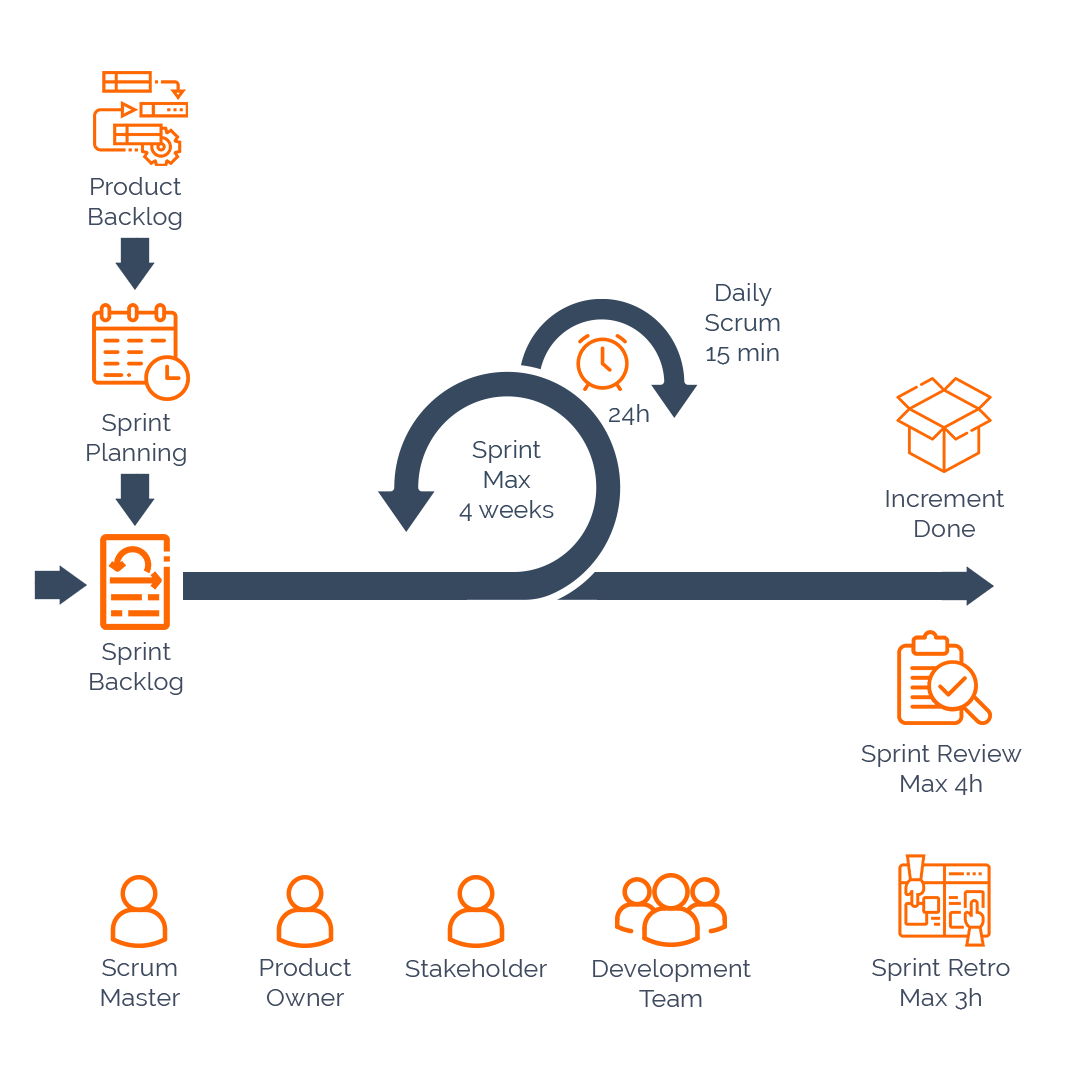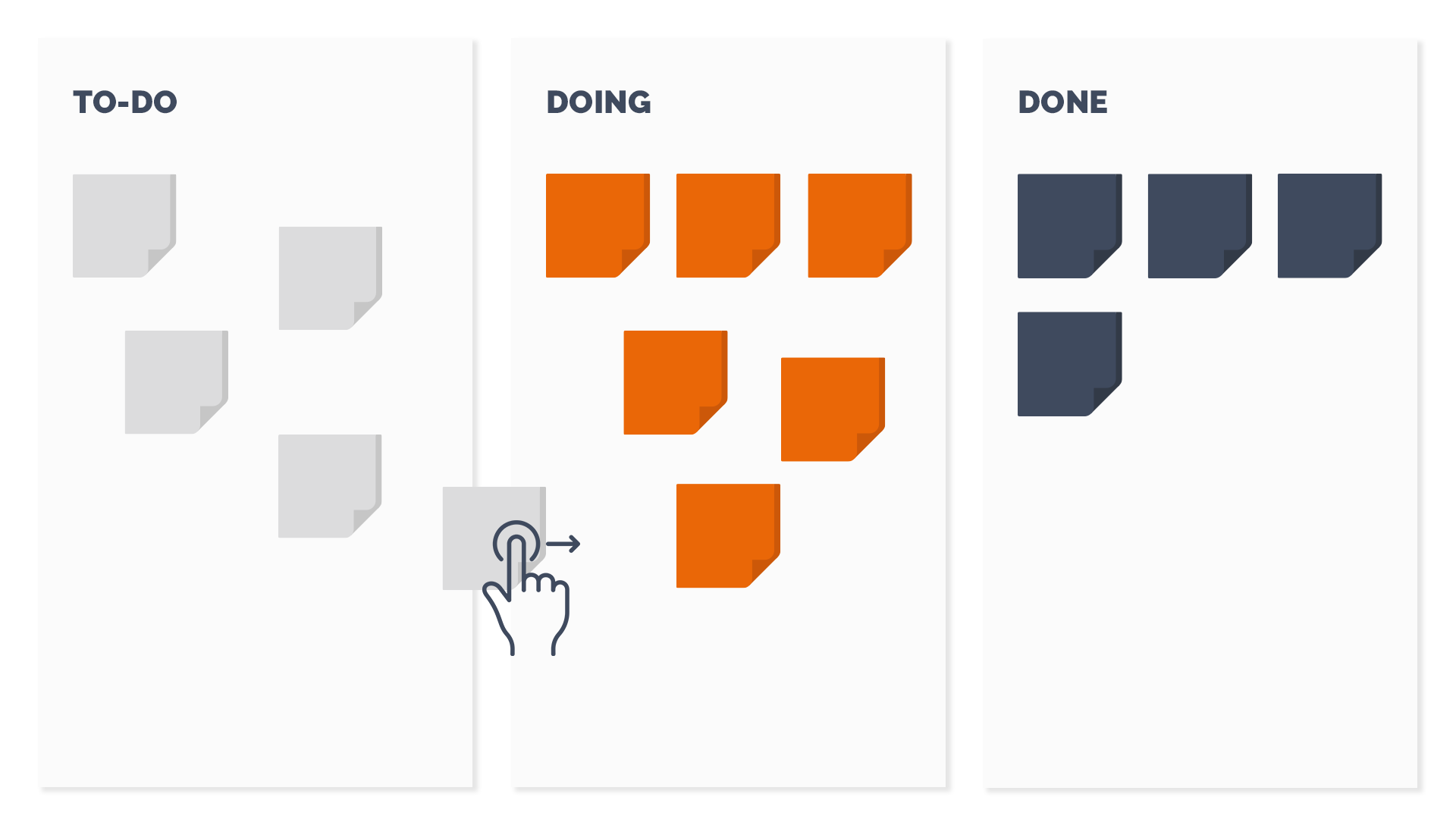Welcome to the third and final part of our agile blog series! In the first and second blog, you learned what agile working means and how to get the right agile mindset. This blog – as the title suggests – gives you an overview of some of the famous agile frameworks. Though, it is highly recommended that you get the right agile mindset first, before diving deeper into this topic. Otherwise, there is a risk that the frameworks will be mistakenly understood, as their adaptations rarely have anything to do with the basic principles of agile working. Let’s move right on to the blog!
What is an agile framework?
An agile framework can be defined as an approach based on the agile philosophy found in the Agile Manifesto. You can refer to any of these frameworks as methodologies or even processes. Various organizations implement many popular frameworks which they often modify to fit their businesses. Let’s have a look at several commonly used agile frameworks out there.
Popular frameworks
Scrum
Utilized by more than 12 million people worldwide, Scrum is probably the most famous agile framework. Like all agile methods, it is used in complex environments (remember the Cynefin framework?). The main goal of using Scrum is to create added value for customers within short intervals of 1 to 4 weeks. These short intervals are called sprints which usually have a fixed duration. After a sprint is finished, it is analyzed to determine some improvements needed for the next session. This principle is also deeply rooted in Agile working. In Japanese, you will come across the term “Kaizen”, which means continuous improvement. Scrum also works with this principle.

A Scrum team ideally works in a self-determined way, without dependencies from outside and it typically consists of:
- The customer or stakeholder who determines the “why”
- A Product Owner who decides what needs to be done
- A development team who decides how it is done
- A Scrum Master who is the coach of the team and makes sure that Scrum is done properly
The team should not be too big, often consisting of 6 to 12 people. Typically, a Scrum Master and a Product Owner are only assigned for one team, not for several. In case there are several teams, some famous scaling methods such as SAFe, Scrum@Scale, LeSS, or Nexus can be used. However, please refrain from introducing these methods before even having at least one Agile coaching session! If you want to delve deeper into the subject, you can read the Scrum Guide.

Kanban
Developed for Toyota in 1947, Kanban makes a strong impression due to its incredible simplicity. Do you have space on your wall or whiteboard to make 3 columns and some Post-Its? Perfect, then you have everything you need for Kanban! The tasks are visualized on the board with the help of Post-Its and are “dragged” from column to column according to the pull principle. There are a limited number of tickets available per column to prevent multitasking and the processing of too many parallel activities. The so-called “Work in Progress”, is limited and adjusted according to the respective load limit. It is important that the team strictly adhere to the Kanban rules and previously defined sprint times, i.e. the duration of individual processing cycles per card. The reason is to ensure the flow of the project and to maintain clear progress.

The rules of Kanban are:
Visualizing
Making process rules explicit
Implementing feedback cycles
Limiting parallel work
Improving together, develop experimentally
Managing the workflow
When using Kanban, there are no roles, Kanban master, or anything similar. Kanban is as simple as it is ingenious if the rules are followed and the system is not artificially complicated. The advantage of Kanban over other methods is the “start where you are” idea.
The Spotify Model
Although it is an organizational model, many companies mistakenly consider the Spotify Model as an agile framework. Spotify itself claimed in 2012 that this model only fits your business if you are a music streaming platform. Though you have to admit that this model inspires a lot of companies, it cannot be implemented like other frameworks we previously mentioned. Organizational models are hierarchical and characterized by Taylorism which does not fit into an Agile world! Unfortunately, many have failed to understand this aspect.
What about agile tools?
You probably have heard of the phrase:
“A fool with a tool is still a fool”
There are plenty of good tools that can help you work in an agile way, like Jira or Microsoft Azure Boards. However, agile tools should never be the main focus. Just because everybody uses it, doesn’t mean that it applies to your situation. Instead of finding the best next thing, make sure you do your research on those agile frameworks and tools in order to understand and internalize them. A word of advice, maybe the Shu Ha Ri principle can help you:
Shu: Follow the rules. Learners follow the teacher’s instructions exactly in their practice without questioning them.
- Ha: Bending the rules. Learners engage with the principles, learn from other teachers and vary their practice.
- Ri: Being the rules. Learners reflect and adapt their own practice and develop their approaches.
Conclusion
Frameworks and tools are simply there to assist you, they should not be the main focus. Make sure that you get the right mindset first before implementing any agile framework or tool. Do you have questions about this article or the whole topic of agility? Or would you simply like to exchange ideas on the topic? Our team of experts is always ready to help you! In the meanwhile, you can have a look at other relevant blogs from this series:
This blog is written by Dirk Börnert – Agile Coach and IT Consultant at Mediaan Conclusion.
